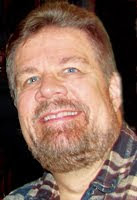To illustrate, compare the six-sentence paragraph above to the sentence below:
One thing to think about is writing short sentences, limiting each sentence to one single thought, helping avoid confusion for the reader, who will understand better if you insert a period after each thought and start the next thought off fresh, with a new sentence.
The two passages are almost identical, but the first is much easier to follow. Admittedly, the first paragraph is also a little choppy and unnatural, but if you practice writing short sentences, your “ear” will tell you when mixing in a longer sentence “sounds right.” In fact, your writing gains a pleasing “rhythm” if you vary short and long sentences – like Morse code … maybe two longs and a short, a long, a short, a long and three shorts.
As a rookie reporter, my editor demanded that the first paragraph, or “lead,” of any story not exceed 25 words. In fact, he wisely limited paragraphs to two sentences. (As a practical matter, newspaper type is set in narrow columns – a couple inches wide, at most. Lengthy paragraphs looked gray and daunting without the visual relief of a paragraph-starting indentation.)
Think of it another way: 25 words is about as much as a speaker can utter without stopping for a breath. Do the guy a favor: Serve up a “period” to time his every gasp.
Or, 25 words is about as much as any reader can hold in his pea-brain at any one time. Write longer, and he’ll have to retrace your words to follow along.
A lot can be communicated in only a few words.
About two hours after JFK was shot in 1963, for example, the Associated Press confirmed his death with a stunningly terse “FLASH” alert:
President Kennedy died at 1 p.m. CST.
Moments later, a “BULLETIN” followed – exactly 25 words, depending on how you count compound adjectives:
President John Kennedy, thirty-sixth president of the United States, was shot to death today by a hidden assassin armed with a high-powered rifle.
Books have been written on the subject of the Kennedy assassination. The comprehensive Warren Commission report, not published until the following year, covers 888 pages, and is supplemented by 26 supporting volumes.
Yet first news – history in a hurry – came over the AP teletype mere minutes after shots rang out in Dealey Plaza. They were written under deadline pressure, with a world breathlessly awaiting word – long before the carefully confirmed “FLASH” and precision-crafted “BULLETIN” … even before the President died, before the most basic facts had been confirmed.
In the mellowing light of historical perspective, that very first teletype may be the most poignant 27 words ever penned:
President Kennedy was shot today as his motorcade left downtown Dallas. Mrs. Kennedy jumped up and grabbed Mr. Kennedy. She cried, "Oh, no!'' The motorcade sped on.
Still think you’ve got a thought worth more than 25 words?
Next: Back to Basics (Part 3) – Two sentences
[For personal writing assistance, go to www.fixadocument.com]

No comments:
Post a Comment